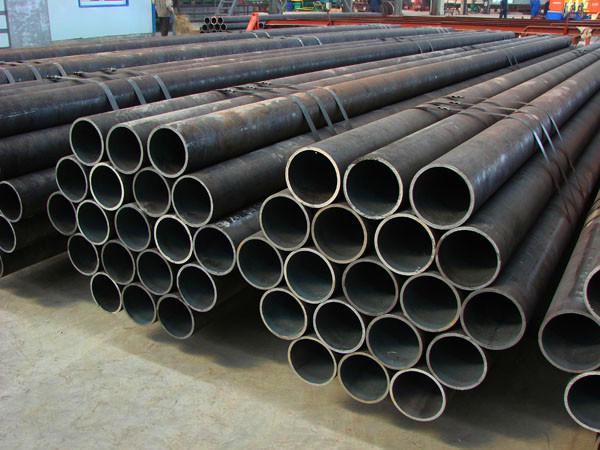Customized products
Introduction for carbon steel pipes & tubes
SPECIFICATIONS
Introduction for carbon steel pipes & tubes
Carbon steel pipes & tubes are made by punching steel ingots or solid billets and then hot rolled, cold rolled or cold rolled. Carbon steel pipe has an important position in China's steel pipe industry.
According to incomplete statistics, there are about 240 carbon steel pipe production enterprises in China, and about 250 sets of carbon steel pipe units, with an annual production capacity of about 4.5 million tons. From the point of view, <φ76, accounting for 35%, <φ159-650, accounting for 25%. From the perspective of varieties, the general-purpose pipe is 1.9 million tons, accounting for 54%; the oil pipeline is 760,000 tons, accounting for 5.7%; the hydraulic prop, precision pipe is 150,000 tons, accounting for 4.3%; the stainless pipe, bearing pipe, and automobile pipe are 50,000 in total. Ton, accounting for 1.4%.

Carbon steel pipe can be divided into seamless steel pipe, straight seam steel pipe, spiral steel pipe, high-frequency welded steel pipe. The raw material for rolling seamless carbon steel pipe is a round pipe blank. The round pipe blank is cut to a length of about 1 meter through a cutting machine, and is sent to a furnace for heating by a conveyor belt. The billets are heated in a furnace and the temperature is about 1200 degrees Celsius. The fuel is hydrogen or acetylene. Furnace temperature control is a key issue. After the tube blanks are released, they are put through the pressure puncher. The most common punching machine is a conical roller puncher. This puncher has high production efficiency, good product quality, large perforation diameter, and can wear a variety of steel types. After piercing, the round billet is successively rolled, rolled or extruded by three rolls. After squeezing, take off the sizing. The sizing machine drills through the cone at a high speed into the steel die to form a steel pipe. The inner diameter of the steel pipe is determined by the outer diameter length of the sizing machine drill. After the steel pipe is sizing, it enters the cooling tower and is cooled by spraying water. After the steel pipe is cooled, it must be straightened. After straightening the steel pipe, it is sent to the metal detector (or hydraulic pressure test) by the conveyor belt for internal inspection. If there are cracks inside the pipe, air bubbles and other problems will be detected. After the quality inspection of steel pipes, strict manual selection is also required. After the quality inspection of the steel pipe, the paint is sprayed with the serial number, specifications and production lot number. And lifted into the warehouse by a crane.






